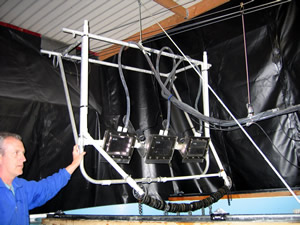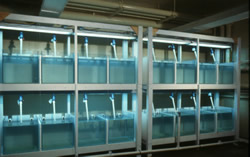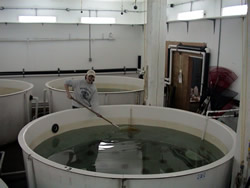
Traditional fishing methods, scientific surveys, population modeling, and fishery management strategies are all dependent upon a fundamental understanding of fish behavior. The Fisheries Behavioral Ecology Program, based at Oregon State University's Hatfield Marine Science Center in Newport, Oregon, conducts research aimed at understanding the relationships between fish behavior and environmental variables (physical and biological), and how this influences distribution, survival, and recruitment of economically important fish species. Program research also includes experimental analysis of fishing gear performance, and the survival and recovery of fishes from stresses imposed during fishing activity.
The goal of the Program is to provide critical information needed to improve survey techniques, to improve predictions on population abundance, distribution and survival, and to conserve populations of economically significant resource species and their habitats. The Program has four primary research topics to meet this goal.

Research emphasis is placed on five species that comprise the largest fisheries in Alaska and the northeast Pacific Ocean: Walleye Pollock, Sablefish, Pacific Halibut, Rock Sole, Pacific cod, and Lingcod. Experimental research is conducted with all life history stages from eggs to adults, and brood stock populations and cultures of prey are maintained for larval and juvenile fishes.
Emphasis is also placed on peer-reviewed publication of basic research applicable to species and issues relevant to the Alaska Fisheries Science Center, and collaboration is routinely conducted with other agencies, including:
- Hatfield Marine Science Center
- Oregon State University (Department of Fisheries & Wildlife and Coastal Oregon)
- International Pacific Halibut Commission
- Oregon Department of Fisheries and Wildlife
- Northwest Fisheries Science Center, NOAA
|
Interns, graduate students, and part-time employees are supported through a variety of mechanisms at both regional and national levels. |


